Global Tourism Industry
A COURSE TOWARDS THE CHANGE
Chapter 4
The global tourism industry is growing rapidly and, as it is evolving, it is facing new challenges that are influencing the sector. In this topic we highlight the most important factors that are going to play a significant role in the evolution of the industry and will have implications in the decisions of policy makers, institutions and corporations when choosing their goals, deciding about their long term policy and developing their short and long term business and marketing plans to handle business challenges on a national and international level. This article is an effort to connect different aspects related to the global tourism industry using information and opinions from different and reliable sources, aiming at the creation of a solid base to re-think tourism global policy, future actions and business proposals.
The Global Tourism Industry article will be presented in 4 differently connected chapters reaching different aspects of the issue, that as a whole are composE the long INDUSTRY’S COURSE TOWARDS A CHANGE.
This is the fourth chapter : Towards A New Sustainable Tourism Model
Chapter 4 :Towards A New Sustainable Tourism Model
You never change things by fighting the existing reality.
To change something, build a new model that makes the existing model obsolete.”Buckminster Fuller
Considering the facts presented in the previous articles (Global Tourism Key Facts, Mega Trends and Long Term Outlook 2016-2026/Globalization’s Impact on Tourism/Mass Tourism Model is about to Reach its Life Cycle Peak)we come to some reasonable conclusions.
Although mass tourism is an important source of economic benefit for national economies, enterprises, local communities and encourages greater global connectivity, the negative implications are creating strong bottlenecks for the current tourism model to continue to operate in the same way in the long term based on consumerism principles that have already led many countries to face severe problems.
Greenhouse gas emissions, water scarcity and waste management, economic leakage, gradual extinction of different cultures, alteration and destruction of the natural environment and natural resources are some of the major problems that are leading to the need for a completely different approach of the tourism business. The global mass tourism system as it operates today must be more balanced and gradually shift to more sustainable forms.
Sustainable tourism is the next path and it is not a discrete or special form of tourism. Rather, all forms of tourism should strive to be more sustainable. Making tourism more sustainable is not just about controlling and managing the negative impacts of the industry. Tourism is in a very special position to benefit local communities, economically and socially, and to raise awareness and support for conservation of the environment. Within the tourism sector, economic development and environmental protection should not be seen as opposing forces—they should be pursued hand in hand as aspirations that can and should be mutually reinforcing. Policies and actions must aim to strengthen the benefits and reduce the costs of tourism.
Some commentators and institutions have implied that sustainable tourism is a particular kind of tourism appealing to a market niche that is sensitive to environmental and social impacts, serviced by particular types of products and operators, and usually—in contrast with high-volume tourism—implying small in scale. This is a dangerous misapprehension. It must be clear that the term ‘sustainable tourism’—meaning ‘tourism that is based on the principles of sustainable development’—refers to a fundamental objective: to make all tourism more sustainable. The term should be used to refer to a condition of tourism, not a type of tourism. Well-managed high-volume tourism can, and ought to be, just as sustainable as small-scale, dispersed special interest tourism.
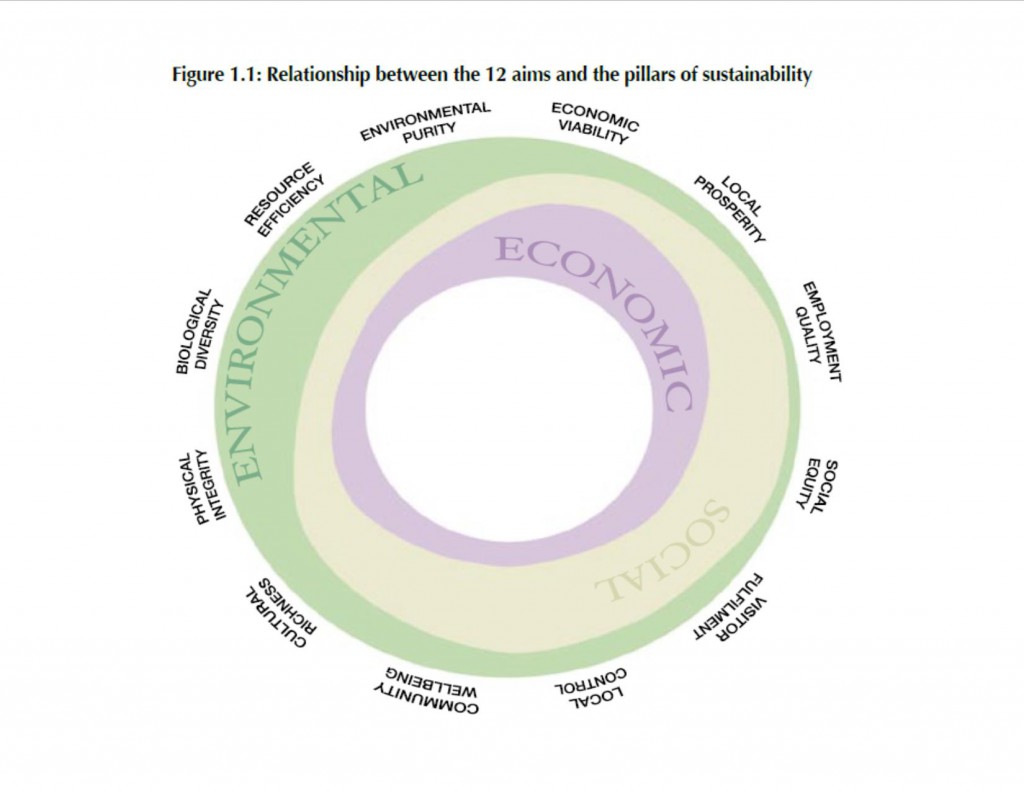
Sustainability is the responsibility of all those involved in tourism. Most of the impacts of tourism are the result of actions taken by private sector enterprises and by tourists themselves. However, there is a clear need for governments to take a leading role if truly significant progress is to be achieved in making tourism more sustainable.
This is because:
- The tourism industry is very fragmented. It is difficult for the individual actions of many micro and small businesses to make a positive difference and coordination is required.
- Sustainability relates to areas of public concern—air, water, natural and cultural heritage and the quality of life. Moreover, many of the relevant resources are managed by governments.
- Governments have many of the tools that can be used to make a difference—such as the power to make regulations and offer economic incentives, and the resources and institutions to promote and disseminate good practice.
Governments should provide an environment that enables and encourages the private sector, tourists and other stakeholders to respond to sustainability issues. This can best be achieved by establishing and implementing a set of policies for tourism development and management, drawn up in concert with others, that place sustainability at its center.
The principles of sustainable development put emphasis on local determination and implementation of policies and actions. This should be placed within a supportive national policy framework.
UNWTO have define sustainable tourism as: “Tourism that takes full account of its current and future economic, social and environmental impacts, addressing the needs of visitors, the industry, the environment and host communities.”
In line with the conclusions of the World Conference on Cultural Policies (MONDIACULT, 1982), of the World Commission on Culture and Development (Our Creative Diversity, 1997), of the Intergovernmental Conference on Cultural Policies for Development (Stockholm, 1998) and of the UNESCO Universal Declaration on Cultural Diversity:
“Culture should be regarded as the set of distinctive spiritual, material, intellectual and emotional features of society or a social group, and that it encompasses, in addition to art and literature, lifestyles, ways of living together, value systems, traditions and beliefs”.
Mass tourism will never stop as it is firmly connected with a basic human need and the right of people with lower income to escape even for a short while from their daily routine. What really must be done is setting up a framework of rules and regulations to balance tourism with the environment and heritage in national and local communities around the globe.
But the development of sustainable tourism requires a shift to a more creative global economy that will set sustainability as a major priority. To make all necessary changes the participation of every stakeholder is a prerequisite including international and local institutions, governments, business people, investors, financial system actors and employees. Identifying priorities, upgrading infrastructure, calibrating fiscal incentives and executing international marketing campaigns are among the tasks necessary to succeed in developing the tourism sector—tasks which are often beyond the scope of local administrations and even single national ministries. Therefore, the difference between success and failure in Tourism can lie in creating strong collaboration frameworks and overcoming financial, institutional and organizational bottlenecks.
Building transport infrastructure, for example, requires the involvement of at least two ministries—transport and finance—along with local authorities, the contractor, investors and, sometimes, other agencies. Given long investment horizons, investors need to be reassured on feasibility, risk allocation and the public sector’s contractual commitment. A recent World Economic Forum-Boston Consulting Group study identifies best practices to overcome these institutional complexities, ranging from the quality of technical, legal and environmental feasibility studies to the rigor of the project preparation process.
In order to connect tourism to national and local economic, cultural and environmental balance more attention should paid to heritage tourism forms all around the globe. Sustainable or heritage tourism as a notion involves the whole of the natural, cultural and social characteristics that constitute the uniqueness of a national or local tourist destination. These unique characteristics must be protected and remain unaltered in time. This is the basis for the creation of a sustainable tourism system all around the globe. There can be no tourism based on global uniformity and monotony. It simply requires global leveling and destruction just for the sake of “entertainment” of “the global citizen” instead of highlighting the differences.
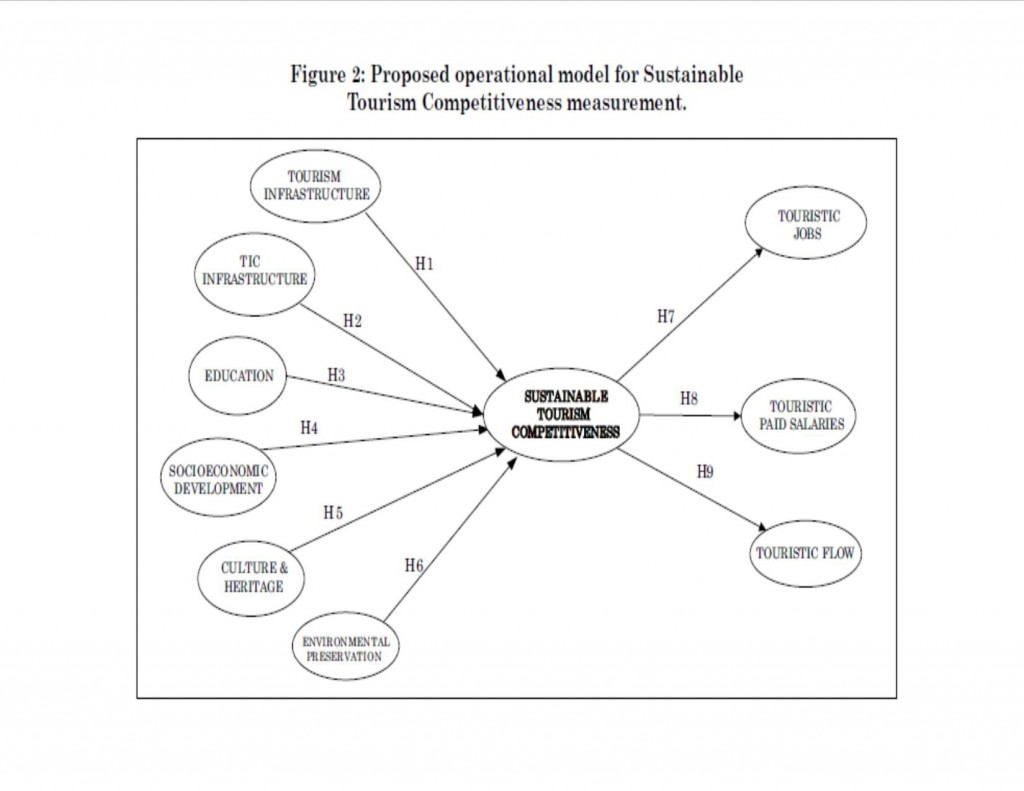
Culture and heritage tourism plays a critical role in building the visitor economy and goes even beyond that. A recent survey showed that over 50% of respondents polled agreed that history and culture are strong influences on their choice of holiday destination. It’s a fast growing and high-yielding sector. Statistics also indicate that culture and heritage tourism continues to grow as rapidly, especially in OECD and APEC regions. We estimate the direct global value of culture and heritage tourism to be well over $1billion dollars, with that of the Asia Pacific region being approximately $327 million. It is already directly responsible for more than 50 million jobs in APEC countries. And what’s more, the indirect benefits of culture and heritage tourism are thought to be of the order of $1 billion and account for a further 75 million jobs across the region.
Sustainable tourism development is also smart business, as a growing numbers of travelers increasingly seek environmentally friendly vacation destinations. According to the UNEP Green Economy Report (2011), global spending on ecotourism is increasing by 20% per year.
International donors, IFIs, and the private sector support this trend. The Sustainable Investment and Financing of Tourism (SIFT) project, for example, defines and promotes sustainability criteria for tourism-related investment as well as providing relevant data, tools, and financing options to integrate sustainability into tourism development and τhe investment process.
There is no denying the fact that culture and heritage tourism tends to attract high-yield tourists. While global figures can be hard to obtain, all available statistics on tourism in various individual markets like the UK, New Zealand, Australia, India etc. reveal a consistent pattern. Culture and heritage tourists often stay longer and spend a lot more money in general than other tourists do. In fact, one study showed that a culture and heritage tourist spent as much as 38% higher per day and stayed 22% longer overall compared to other kinds of travelers.
Although the statistical evidence doesn’t show consistency when it comes to repeat visitors, tourism data on United State’s Culture and Heritage visitors indicates that the level of repeat visitation amongst this group of travelers is higher than that of traditional tourists.
Heritage sites such as the Tower of London and Edinburgh Castle help generate £26.4bn towards the UK economy through tourism, almost £6bn more than previously estimated.
Sustainable tourism is a rising alternative to the mass tourism model and offers a number of distinct advantages in certain areas. However, the sustainable tourism model is slow and more complicated to develop. It requires a more developed infrastructural and economic base, as well as accommodating cultural philosophy.
For changing the distractive course of the tourism sector we should reexamine the tourism philosophy and look at destinations not as a resource to be rapidly exploited but as sacred places to be discovered and work towards protecting their uniqueness in terms of natural sources, culture and history. For this reason we have to develop a more conscious traveling attitude as a new tourism model to replace, slowly but steadily, the existing and collapsing global mass industrial tourism model.
Tourism is a system of three basic elements: 1.Places, 2. Guests and 3. Hosts. The most important element that affects the whole system is people. If people change their values about how the world works then this can change everything. Today there are multiple forces that are pushing the tourism system to change such as:
- Key high influence actors in the global economic system are shifting the core values and the understanding on how the world works.
- The industrial model on which tourism is based is collapsing. As it matures, it produces diminishing net returns to all participants, and relies on volume growth to compensate for yield declines. As visitor volume increases, so do the costs associated with resource depletion, pollution and wealth concentration.
- External pressures will require the tourism economy to pay significantly more for services that hitherto have been free or relatively cheap.These cost increases will occur when reduced incomes and higher demand volatility are already compromising the resilience and profitability of existing businesses.
The focus shifts from more to better, from growth to flourishing and to contributing to a Regenerative Economy. The model recognizes that while change is best effected in a community, its members must also commit to change within themselves. We need healthy communities supporting healthy enterprises operated by people living fulfilling, productive, happy lives. The new paradigm will call for new organizational forms and styles of leadership and for hosts to become active change agents.
Unless tourism enterprises embrace the new model they will continue to see their profit margins shrink; their resilience to external shocks weakens; and their viability diminishes. Tourism entrepreneurs and their communities need to assume responsibility for changing and cannot assume that traditional institutions or agencies can supply fixes.
According to the Nielsen study on the ROI of sustainability, about 55% of consumers are willing to pay more for products and services from companies that demonstrate the generation of
impacts that are socially and environmentally positive. Shocking? There’s more: the same measure was 10% lower just three years ago. The tendency to acquire sustainable products and services is experiencing an unstoppable growth in parallel with the growth of the purchasing power of the younger generations.
And yet the majority of tourism companies still see sustainability as a “green tint” for their marketing efforts and not as a strategic priority. What these companies are missing may not be the benefit of sustainability in itself, but the long-term performance provided by a good reputation, whether it is gained in the field of sustainability or not. Enhancing the reputation of the company can improve relationships with suppliers and customers, leading to increased profitability. Also, it is proven that by adopting fair employment practices, health standards and adequate security, you can reduce the company’s exposure to potential litigation and other risks.
But that’s not all. The adoption of sustainable actions not only improves the operating efficiency of the company, which leads to increased innovation and the development of competitive advantages that also contribute to improved financial performance, but it also helps to strengthen brand engagement not only with customers, but also with investors, employees, suppliers and other stakeholders, ensuring the loyalty of all actors involved in the value chain.
Sustainable initiatives lead to a more committed and efficient workforce, to a more loyal and satisfied customer base, to improved relations with stakeholders, greater transparency and ability to innovate. All of these are factors that contribute to improving the long-term financial performance. It’s no wonder that sustainability leaders also tend to be leaders in their industries from the financial point of view. They have a wider vision, they focus on the long term and are better at anticipating and minimizing risks.
Commitment to sustainability has a positive effect on financial results, causing an increase in customer satisfaction and thus promoting loyalty. This is the conclusion of Greenloons’s study on the ROI measuring by Fáilte Ireland (the national tourism authority in Ireland) on the effects of the adoption of sustainable tourism carried out in the last decade in the country.
The study shows that:
+ The ROI for hotel establishments (green hotels, hostels, inns) is higher than for other types of companies (guided tours) that implement sustainable practices.
+ Operational ROI is negative for about five years, but the Return on Investment generated by other variables (community, employees, customers) makes up for it.
+ The main generator of positive impacts on the triple bottom line (accounting for economic, environmental and social sustainability) is the transparency with the customer when it comes to making clear what makes the company sustainable and how that contributes to improving the experience of the customer (storytelling efforts).
Back in 1999 The Mayor of Calvia, Spain, speaking on behalf of local authorities, told the Commission that tourism focused too much on short-term economic factors. The present model, which focused only on increasing the number of tourists at any price, should be changed to
reflect environmental, social and cultural needs for each locality. Also, growth should be limited in those areas that were already saturated and well-informed tourists, cognizant of the conditions required for sustainability, should be cultivated.
Similarly, a representative of the International Confederation of Free Trade Unions called for changing individual behaviour and the entire model of tourism. Speaking for trade unions, she emphasized the key role that tourism workers and associations played in transforming the industry, since they influenced tourist behaviour, identified risks and raised awareness. But, all those efforts were limited without full cooperation from business, she added. Businesses often hampered the environmental efforts on which sustainable tourism was based.
Many similar conferences aiming at shifting the global tourism model to a more sustainable form came to the following conclusion: ”Consumers did not have an understanding of the environmental concerns of the places they visited. But, how much did the industry do to teach travelers their responsibilities in that regard? Industry needed to make more efforts to educate and, to do that, it needed the commitment of governments at every level and the partnership of trade unions. Industry must understand that it also was a stakeholder in sustainable tourism. It was beginning to accommodate a new generation of travelers that were better educated and more in touch with the world around them. All sectors must join hands to educate the tourists of the future. All partners must participate if the tourism industry was to become a sustainable undertaking. To create a sustainable tourism industry, changes were needed in the entire model of tourism”.
The chief executive of the Association of British Travel Agents (ABTA), Mark Tanzer, said that the affordability of home rental websites such as Airbnb is having a detrimental effect on tourist hot spots such as Florence and Barcelona.
Tanzer claimed that there has been an influx of visitors to historic European sites. And, because of this, they will eventually struggle to cope with the numbers.
Overcrowding in key destinations is becoming a pressing issue. Without controls, we know tourism can kill tourism. Read more: 1. http://www.dailymail.co.uk/travel/travel_news/article-3661850/Travel-expert-warns-Europe-s-best-loved-cities-destroyed-Airbnb.html#ixzz4GelY4DCj ;2.http://www.economist.com/news/business/21704856-number-beauty-spots-are-severely-restricting-tourism-nothing-see-here
In a recent article in Asia Correspondent entitled “Sustainability, the new reality for future tourism” it was noted that: “The tourism industry will also need to adjust its business models to focus on achieving sustainability. Until recently, sustainable tourism was equated with images of secluded lakes, cute animals or walks through forest. This will need to change. All forms of travel will need to generate less emissions. The tourism industry, in line with industry generally, will need to demonstrate how it is committed to sustainability. Failure to do so will be viewed negatively by consumers and result in loss of business and possibly incur financial penalties. The challenge for the global tourism industry is how to reinvent itself as a sustainable industry”.
International tourism expert, Professor Bruce Prideaux of CQ University in Cairns, Australia argues that failure to think and act sustainably will have dire consequences for businesses and communities. “Destinations that fail to think sustainably are far less likely to grow than those that
are effectively and sustainably managed. We realized that if the industry is going to grow and thrive, there is a need in governments and the tourism industry not just for business managers, but for business managers with a specific understanding of tourism and sustainability. ”Read More: https://asiancorrespondent.com/2016/05/sustainability-new-reality-future-tourism/.
In order to shift tourism to sustainable forms there are 12 basic aims to be met:
1) Economic Viability: To ensure the viability and competitiveness of tourism destinations and enterprises, so that they are able to continue to prosper and deliver benefits in the long term.
2) Local Prosperity: To maximize the contribution of tourism to the economic prosperity of the host destination, including the proportion of visitor spending that is retained locally.
3) Employment Quality: To strengthen the number and quality of local jobs created and supported by tourism, including the level of pay, conditions of service and availability to all without discrimination by gender, race, disability or in other ways.
4) Social Equity: To seek a widespread and fair distribution of economic and social benefits from tourism throughout the recipient community, including improving opportunities, income and services available to the poor.
5) Visitor Fulfillment: To provide a safe, satisfying and fulfilling experience for visitors, available to all without discrimination by gender, race, disability or in other ways.
6) Local Control: To engage and empower local communities in planning and decision making about the management and future development of tourism in their area, in consultation with other stakeholders.
7) Community Wellbeing: To maintain and strengthen the quality of life in local communities, including social structures and access to resources, amenities and life support systems, avoiding any form of social degradation or exploitation.
8) Cultural Richness: To respect and enhance the historic heritage, authentic culture, traditions and distinctiveness of host communities.
9) Physical Integrity: To maintain and enhance the quality of landscapes, both urban and rural, and avoid the physical and visual degradation of the environment.
10) Biological Diversity: To support the conservation of natural areas, habitats and wildlife, and minimize damage to them.
11) Resource Efficiency: To minimize the use of scarce and non-renewable resources in the development and operation of tourism facilities and services.
12) Environmental Purity: To minimize the pollution of air, water and land and the generation of waste by tourism enterprises and visitors.
The order in which these twelve aims are listed does not imply any order of priority. Each one is equally important.
The course towards the sustainable tourism model has already started and the benefits for private and public organizations that will lead the effort will be enormous in terms of social recognition, brand awareness , profits and long term viability.
References:
- The Guardian: Why sustainable tourism is the travel industry’s duty
- Triple Pundit (People, planet, profit)
- The Nature Conservancy: What is ecotourism.
- Food & Agriculture Organization Of United Nations: ECOTOURISM
- Untemed Path: Benefits Of Ecotourism
- USAID: Tourism Investment & Finance/Accessing Sustainable Funding and Social Impact Capital.
- Systemic Analysis and Model of Sustainable Tourism: Sandra Camusa, Lubica Hikkerovab, and Jean-Michel Sahutc
- WWF: Towards sustainable tourism investment
- Center For Sustainable Economy :
- World Bank: Cultural Heritage and Sustainable Tourism
- Blue& Green Tomorrow: UNWTO: leading the global drive to sustainable tourism.
- Ecologist: Galápagos rebellion against foreign investment in hotels, golf courses, luxury tourism.
- TOWARDS A NEW LOCAL SUSTAINABLE DEVELOPMENT MODEL FOR A CONSOLIDATED TOURIST DESTINATION: THE CASE OF LOS CABOS, MEXICO:A. MONTAÑO, & A. IVANOVA Department of Economics, Universidad Autónoma de Baja California Sur, México
- My Travel Research.com: The role of culture & heritage tourism in building the visitor economy & beyond, April 2015
- The Guardian: Sustainable tourism: 10 key issues investors should consider
- Journal of travel research : The economic sustainability of tourism growth through leakage calculation
- United Nation: CHANGING CONSUMER BEHAVIOUR IN TOURISM THEME OF DISCUSSION IN COMMISSION ON SUSTAINABLE DEVELOPMENT
- Journalist ResourceUber, Airbnb and consequences of the sharing economy: Research roundup
- Bulgarian Association of Alternative Tourism. «Information about the alterantive tourism»
- United Nations, New York, 2013. Department of Economic and Social Affairs.World Economic and Social Survey 2013.Sustainable Development Challenges
- 2012-2016 Slovenian Tourism Development Strategy. Article 5 of the Promotion of Tourism Development Act.Official Gazette of the Republic of Slovenia, No. 2/04 [Electronic resource
- Robinson, M. and Picard, D. Tourism, Culture and Sustainable Development, Division of Cultural Policies and Intercultural Dialogue, Culture Sector, UNESCO. 2012.
- Bulic, N. Croatian Tourism In Sustainable Development Invited Lecturer. In Environment Protection and Health – what can UWE do in 21st century.Croatian Association of University of Women. October 11 – 12, 2010: Dubrovnik -Croatia.
- Asian Development Bank: Sustainable Tourism An Opportunity for Economic Growth in the Pacific
- International Labor Organization: Sustainable tourism: A driving force of job creation, economic growth and development, 17 May 2016
- UNEP: Making Tourism More Sustainable. A guide for policy makers.
- Inclusive Growth: Business Model Innovation Cycle(http://inclusive-growth.com/2016/03/business-model-innovation-cycle-2/
- Inclusive Growth: Creative industry, tourism and local development in South Korea / Business Mirror / by Eagle Watch – August 11, 2016, By Fernando T. Aldaba and Ser Percival K. Peña-Reyes (http://inclusive-growth.com/portfolio-items/creative-industry-tourism-and-local-development-in-south-korea/ ).
29. Inclusive Growth: Indigenous Tourism: Authentic, Educational and Culturally Exciting / TOURISM-REVIEW.COM :Indigenous Tourism: Authentic, Educational and Culturally Exciting(http://inclusive-growth.com/portfolio-items/indigenous-tourism-authentic-educational-and-culturally-exciting/?portfolioID=16038

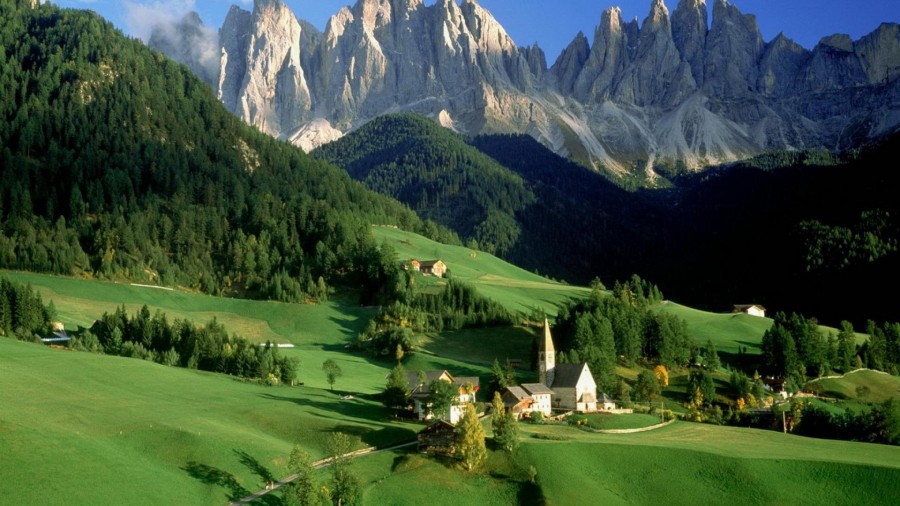
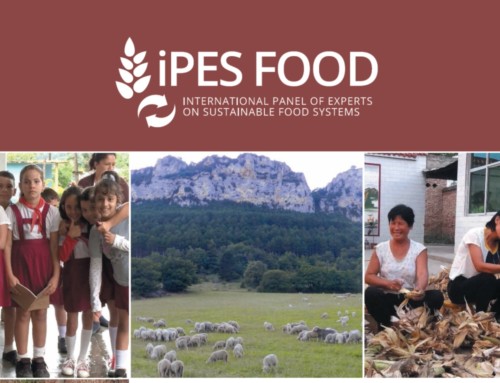

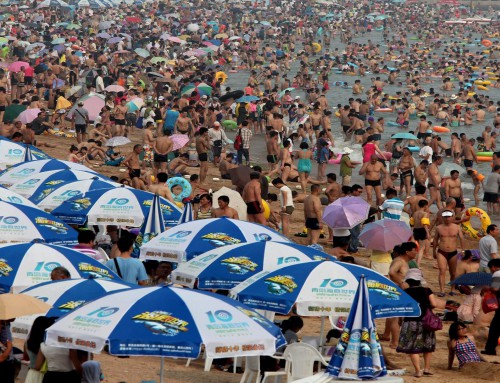

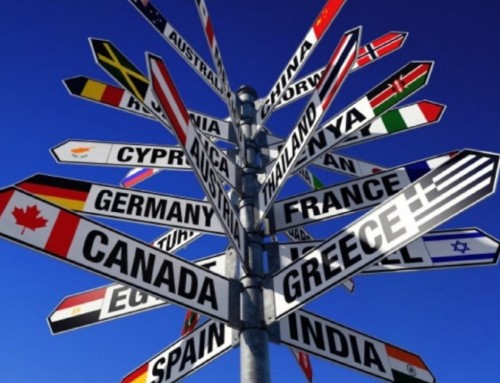
Leave A Comment